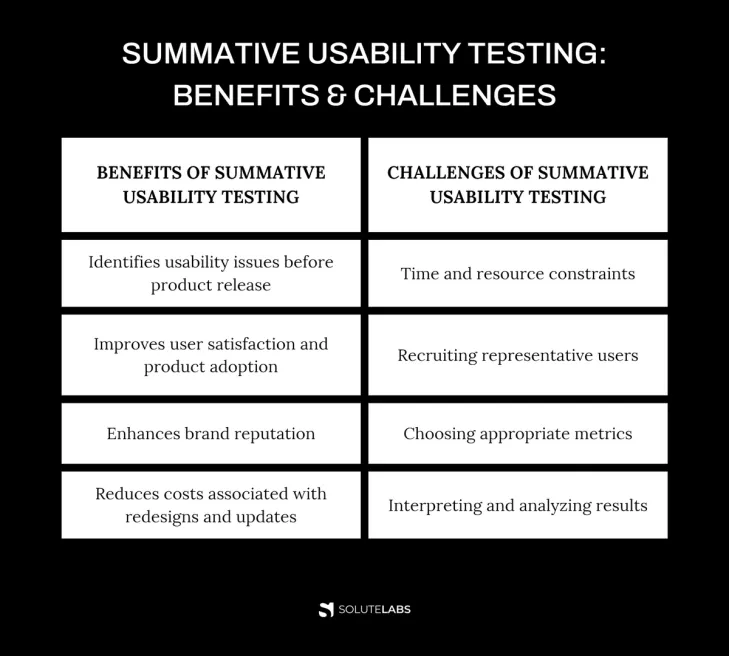Usability testing is a critical process for evaluating the effectiveness and ease-of-use of a product design. It involves observing and gathering feedback from users as they interact with the product to identify any potential issues or areas for improvement. However, there are two types of usability testing that are commonly used: formative and summative. In this blog post, we will delve into the differences between formative and summative usability testing, explore the advantages and disadvantages of each approach, and provide insights on when to use each method. By the end of this blog, you will have a comprehensive understanding of both approaches, allowing you to choose the best method for your product design and development process. So, let's dive in and explore the world of usability testing together!
What is Formative Usability Testing?
Formative Usability Testing is conducted during the initial stages of product development to assist in shaping the product's design and structure. It aims to address the "why" and "how" questions related to a product's usability. And seeks to understand why certain aspects of the product are not working and involve iterative evaluations throughout the design and development process to improve the product's usability.
The primary objective of Formative Usability Testing is to identify and address any potential issues or usability problems before the product is fully developed. This testing serves as a support tool for decision-making during the early stages of the design process and helps in gaining insights that can shape the product's direction.
Typically qualitative in nature, it provides insights into how users experience the design and where they encounter difficulties. This testing involves observing users as they interact with the product and using techniques such as the think-out-loud method to gather feedback on their experience.
By understanding users' perspectives and experiences, formative usability testing can identify potential issues and suggest solutions to improve the product's overall usability and user experience.
What is Summative Usability Testing?
Summative Usability Testing is typically conducted at a later stage in the product development process, when the product has been fully developed.
This type of testing is often carried out when a design is nearly complete and involves evaluating the design against quantitative goals or competitor's products.
The purpose of Summative Usability Testing is to evaluate a product with representative users and tasks, designed to measure the overall usability of the product in terms of effectiveness, efficiency, and satisfaction.
Here, the primary objective is to evaluate a product using defined measures. This testing approach utilizes UX metrics of users' success to assess whether the product meets the defined usability success metrics.
Summative Usability Tests are typically quantitative in nature, providing a final validation of the product's usability. These tests are conducted once usability issues have been identified and addressed.
Difference Between Formative and Summative Usability Testing
Why Conduct Formative Usability Testing?
Formative usability testing has a significant impact on design decisions and is regarded as an effective tool for determining which design features are valuable and which ones are not.
Experts highly recommend conducting a minimum of two formative usability tests to ensure the product's usability is optimal.
- The first formative usability test should be conducted during the early design concept phase using a wireframe prototype with no working functionality. This approach allows for the validation of workflows, navigation, layout, and terminology decisions.
- The second formative usability test should be conducted on a Minimum Viable Product (MVP) with some functionalities ready, just prior to the development phase.
Neglecting formative usability testing during the design and development lifecycle may result in designing a product that will not be a usable solution.
Formative usability testing is conducted:
- In the early stages of design and development
- To enhance the design of the product
- Tests can be conducted remotely using moderated or unmoderated methods.
- Tests can be performed on wireframes and MVP designs.
- Typically conducted with a sample size of 5-8 users.
Formative Usability Testing - Benefits & Challenges
Why Conduct Summative Usability Testing?
Summative evaluation provides insights into the overall usability of an interface or product. If summative usability testing is not conducted before the product is released, it becomes difficult to identify any potential issues with the product's usability.
This is utilized to obtain measures that establish a usability benchmark or compare results with usability requirements. The metrics recorded during summative usability testing provide insights into what actually happens during the test, rather than user perceptions or feelings.
Task-based usability requirements should include metrics such as task completion rate, time spent on task, error rates, and overall user satisfaction.
Summative usability testing focuses on measuring the effectiveness and ease of use of a product. Metrics such as pass/fail rates of user tasks, average task completion time, click counts, and user or system errors are commonly used to evaluate the product's usability.
During summative testing, the volume and speed of tasks performed, along with the pass/fail metrics, are prioritized over the quality of observation or user narrative.
Summative usability testing is conducted:
- During the last stage of product development, just prior to the release of the product
- To validate a product's usability against established usability metrics.
- To establish a usability benchmark for future product iterations.
- To compare the product's usability with competing products in the market.
- Tests are performed with fully functional prototypes.
- Typically conducted with a sample size of 15-20 users.
Summative Usability Testing - Benefits & Challenges
Conclusion
Both formative and summative usability testing play a crucial role in ensuring that your product meets the desired level of usability and user experience. While formative testing provides feedback and suggestions for improvement during the development process, summative testing evaluates the overall usability of the product against predefined metrics. By conducting both types of testing, you can identify usability issues, improve user satisfaction and product adoption, enhance your brand reputation, and reduce costs associated with redesigns and updates.
If you're interested in learning more about formative and summative usability testing or want to improve your product's usability and user experience, contact us today to schedule a consultation with our expert team. Let us help you optimize your product and ensure its success in the market.
Frequently Asked Questions
Have a product idea?
Talk to our experts to see how you can turn it
into an engaging, sustainable digital product.







